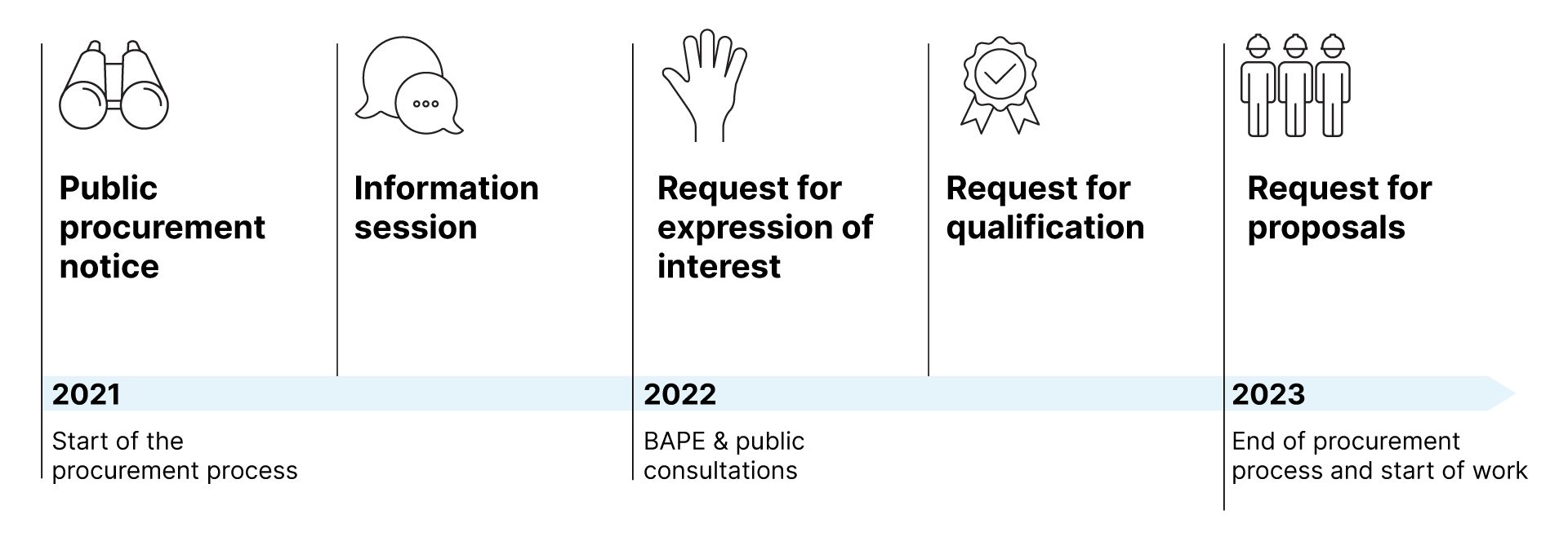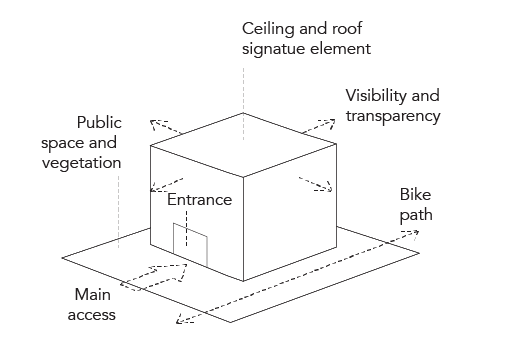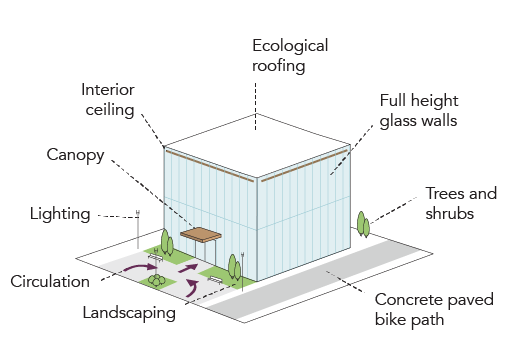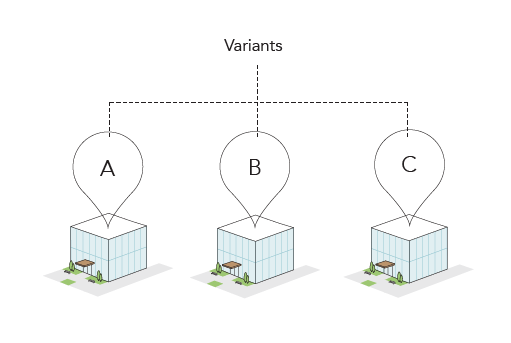Answers to your questions about the REM de l’Est Notice to the market
The REM de l’Est notice to the market was published on October 19 in order to allow the market to prepare adequately for the various phases of the procurement process for this large-scale project.
Why now?
The notice to the market is the first step in an efficient two-year procurement process. At this stage, the objective is to generate market interest and, at the end, obtain the best project at the best cost. The project is still in the detailed planning stage and changes may still be made during the request for proposal process. We must be flexible in order to take into account the realities of each location and improve the project in light of our discussions with citizens, stakeholders as well as the work of the independent expert committee and architectural firm Lemay.

Stay Informed
We will keep you updated on all news and developments regarding CDPQ Infra and our projects.
Why not use the same procurement method that was used for the REM?
We have adjusted our procurement approach to take into account the current context of the market and the scope of the project; we have also optimized the procurement process in an effort to continuously improve the way we do things.
• Context
The project execution context for the REM was different than the current reality for REM de l’Est. When the REM was launched, we had the opportunity, with the construction of the new Samuel De-Champlain Bridge, to implement a light metro project that would use this key corridor. There was a desire to quickly implement projects that had not even been discussed for decades, such as the link between the airport and downtown. We met all the necessary conditions to make the project happen within the time frame dictated by the momentum at the time.
• The location
Urban and architectural integration is at the heart of the REM de l’Est project since it will run through very strategic areas such as downtown Montréal.
• Infrastructure to be built
Of the REM de l’Est's 32 km, 8 km will be underground, which represents a significant portion of the route. We believe that it is therefore essential to have state-of-the-art expertise to carry out this work.
How will you ensure that the REM de l’Est structure will harmonize with Montréal’s urban landscape?
Architecture is at the heart of the project’s procurement process. Prescriptive architectural guidelines will be imposed on the consortiums beginning with the RFP process:
The guiding principles have been developed with the contribution of the independent expert committee and the world-renowned architecture firm Lemay.
Will you require local content in your procurement process?
This is a major project and Québec-based companies will be invited to submit proposals. Our intent is to maximise local content while respecting international treaties. These parameters will be known at a later date. We are confident that local businesses will be able to contribute significantly to this mega-project, either directly or indirectly.
Our desire with the REM de l’Est project is to maximize local and economic benefits for Québec; we anticipate benefits of approximately $6.3 billion for the GDP.
Interesting fact: even without requiring local content, the final results of both completed RFPs for the REM are conclusive:
- More than 65% local content from Québec from both consortiums;
- Approximately 34,000 jobs are being created in Québec during the REM construction phase, and 1000 permanent jobs will be created thereafter;
- We must also consider all the local expertise that such projects entail; establishing two new REM maintenance centres will ultimately create 250 new permanent jobs here in Québec.
Next steps
Our goal is to submit the architectural vision for the project in the coming months and the resulting architectural renderings. The public will then be able to preview how the stations and elevated structure will integrate with the surroundings. We look forward to the opportunity to show citizens that their concerns have been heard and hope that this will be an opportunity to rally public support for this important and desperately needed project for eastern Montréal. This step will precede submission of the impact study for the BAPE.





